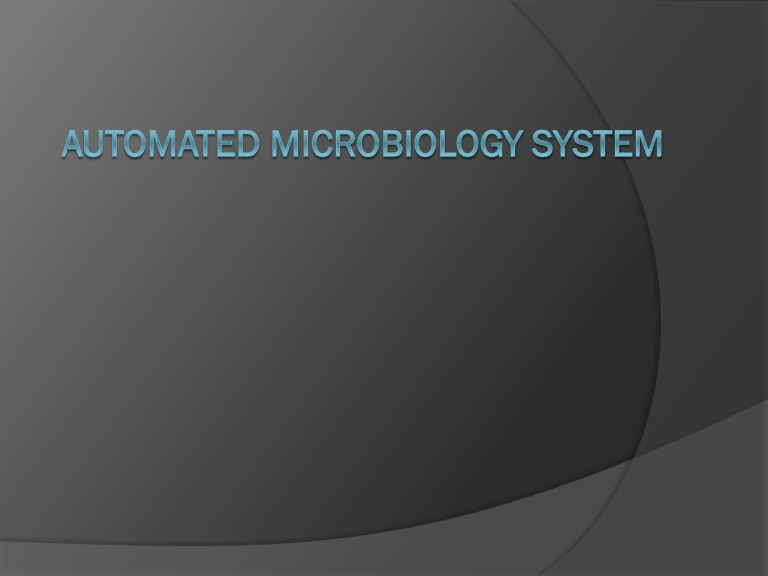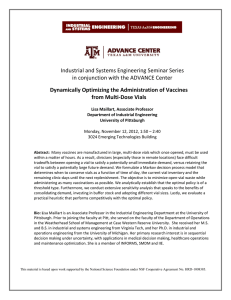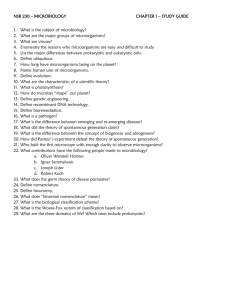
Microbiology section of clinical laboratory is adopting automation more than hematology and chemistry section. Two main tasks of microbiology laboratory are: Identify the causative agents of infections To determine Antibiotic susceptibilities. History: Traditionally it has been accomplished by test tube biochemical reaction and agar diffusion plates. In 1960 and 1970 microorganism identification kits becomes popular kirby-Bauer antimicrobial susceptibility testing. In 1980 and 1990 automatic susceptibility testing founded on the principle of nephelometry, spectrophotometry, fluorometry and radiometry. There are two systems for detecting microorganisms in the blood and other fluids. Becton microbiology system, BACTEC. Organon Teknika’s BacT/Alert. There are four systems for detecting bacteria and their antibody susceptibility: One immunoassay system for identifying organisms antigens and hosts antibodies: BioMerieux’s VIDAS. BACTEC system to detecting Microorganisms in blood. In early 1970s, introduction of BACTEC 460. It is based on the automated measurement of carbon dioxide produced by growing organisms. It has reading capacity of 60 vials. The culture medium: carbon 14 labeled glucose and other substrates. Components: This systems uses 4 components: Disposable culture vials inoculated with blood. The BACTEC instrument that continually tests vials to asses microbial growth. Culture gas and Adopters to regulate gas flow Shaker to agitate the vials. Working principle: The microorganisms break down the labeled chemicals and release C-14 labeled carbon dioxide. Detection of C-14 labeled carbon dioxide indicates growth of microorganisms, fungi, myobacteria. Block Diagram: Procedure: Aerobic and anaerobic culture bottles are incubated offline in standard microbiology incubator. Aerobic Bottles are placed on shaker for first 24 hours, which simulates faster growth. Blood culture vials are placed on BACTEC instrument in four vial rack. Testing of vial begins with a pump producing a partial pressure in ion chamber. Ion chamber contains positive and negative probes from and electrometer. Radioactivity in gas changes the impedance between probes. Change in impedance is converted in growth index, GI number. This GI number is displayed on front panel and printed on paper. Output indication: If GI value increases the threshold value, red light illuminates. This identifies vials with microorganisms. Then test head rises and leaves the vial. The head flush and ion chamber outlets valves are opened. CO2 is retained in soda lime trap. Ion chamber and electrometer is prepared for next reading cycle. Maintenance: Checking of display lights Examining the needles Changing the tubes



